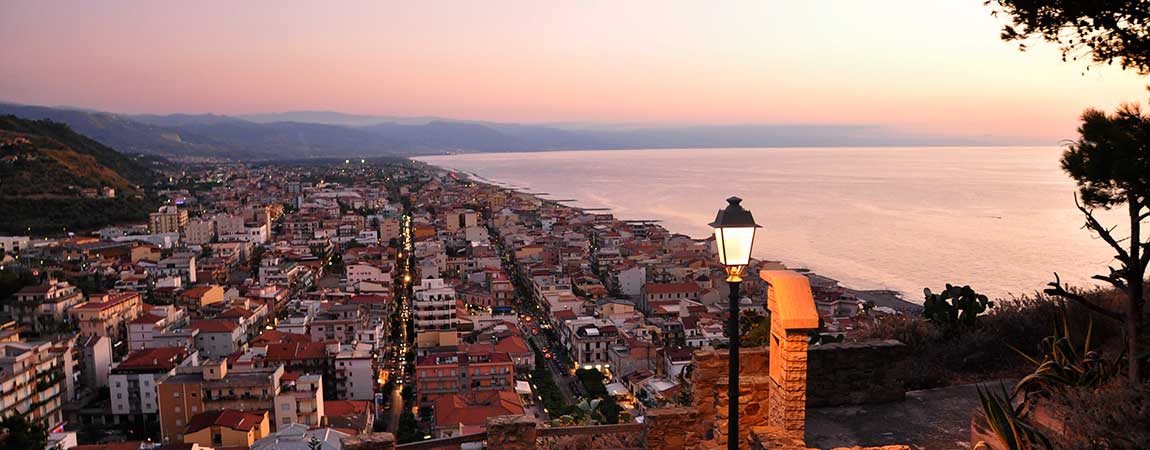
Sicily is a land to be discovered and experienced. In fact, there are countless places to see, including cities steeped in history, archaeological sites born of an ancient history and small villages with a suggestive atmosphere.
Among the latter there is Capo d'Orlando, a town in the province of Messina and an integral part of the lush Nebrodi Park: is a place nestled between rolling hills and the Tyrrhenian Sea, full of museums and sites that tell of a story that blends with the legend.
Capo d'Orlando: what to see
According to legend, Capo d'Orlando in the past was none other than the Greek settlement of Agathirno, consecrated to Dionysius and founded, as the name suggests, by Agatirso, the son of Aeolus. It was an important commercial centre, before slowly falling into oblivion after the arrival of the Romans: the town was reborn only in the Middle Ages, also thanks to Charlemagne and in this period it was renamed Capo d'Orlando in honor of the homonymous paladin who apparently stayed there before leaving for his crusade in the Holy Land.
The symbol of Capo d'Orlando is certainly the Madonna Mountain, on top of which is the Shrine of Mary Most Holy erected at the end of the 500th century, on the site where San Cono Navacita appeared to the Raffa brothers, giving them an effigy of the Virgin and Child, as small as a hand. In 1925 the simulacrum was stolen and today the church, with beautiful inlaid wooden ceilings and embellished with works by Gaspare Camarda, houses a similar one but in silver. The sanctuary stands next to the remains of a castle that fell into ruin after an attack in the 400s: a stone's throw away is a belvedere that offers a magnificent view over all of Capo d'Orlando and the sea, up to the Aeolian Islands.
At the foot of the Mount here is the Faro from the 900s, one of the most beautiful in Italy: it is a pink building embellished with neo-Gothic style decorations and flanked by a yellow cottage. The Capo d'Orlando lighthouse is a fundamental point of reference for sailors, in the stretch between Capo Calavà and Cefalù.
Not far from the lighthouse is the San Gregorio lake, fed by salt and fresh water springs: it stands on the road to the fishing village of the same name, which can also be reached by following the Schooner Trail, an ancient mule track that allows you to stroll through the Mediterranean scrub, in absolute silence interrupted only by the sound of the sea.
Capo d'Orlando: culture and sea
Capo d'Orlando is a village full of museums, starting from the "Antiquarium Comunale Agatirnide", where finds dating back to the Bronze Age and funerary objects dating back to the period between the IV and III BC are exhibited. This exhibition does nothing but underline how ancient this territory is and also the vestiges of Roman thermal baths prove it: they are located in Bagnoli and the archaeological site shows the remains of this thermal establishment from the XNUMXth-XNUMXth century AD flanked by a domus slightly older Roman. You can still see the rooms, embellished with geometric floor mosaics, in particular the remains of the frigidarium, the calidarium and tepidarium.
Also worth a visit Museum of Ethnohistory of Sugar Cane and Lemon, dedicated to the ancient workings in the traps of these two products: the museum is housed inside the Bastion castle, built to protect the surrounding plantations from pirate attacks. The park surrounding the building is beautiful, like the park of Villa Piccolo, rich in biodiversity: this nineteenth-century residence also hosted Tomasi di Lampedusa for some time and also includes a well-stocked library full of very ancient texts.
During a trip to Capo d'Orlando, one cannot fail to visit his marina, complete with a marina and refreshment points, perfect for spending a few hours breathing in the seafaring soul of the town. Here are also the Mercadante quarries, circular stones that emerge right on the water: they are thought to be ancient millstones from old mills.
Not far from the Andrea Doria seafront, in front of which the Scoglio della Formica rises Church of Christ the King, in Piazza Matteotti: it dates back to the XNUMXth century and inside it displays stained glass windows, beautiful mosaics including one of the Risen Christ and an image of the Virgin from the Trentino school.
What to do in the Aeolian Islands
© Image by Goldmund100 (Luca Volpi), CC BY-SA 3.0, via Wikimedia Commons









